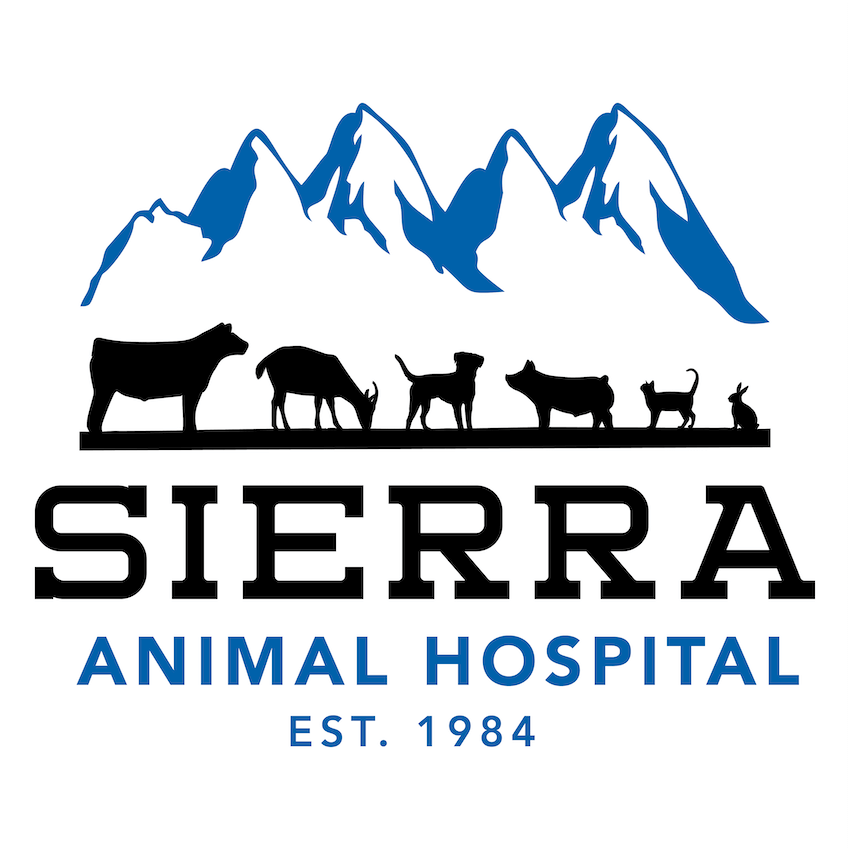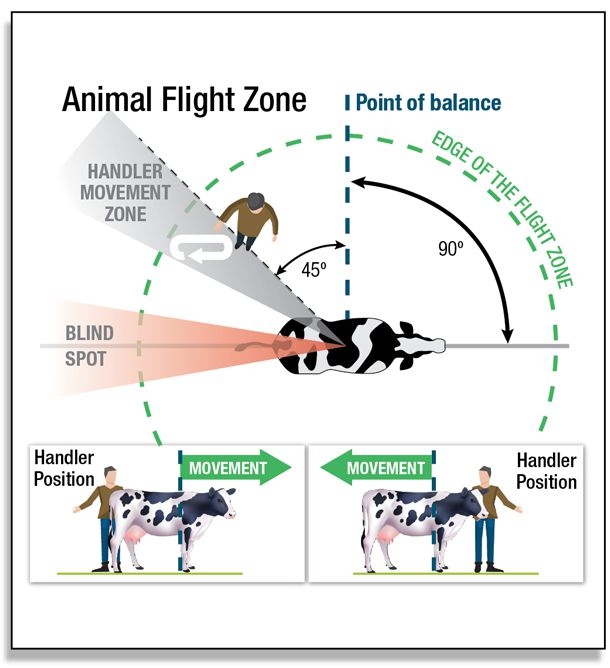Cattle Restraint
Having a basic knowledge of the animal’s behavior is important in safe and humane handling. Amount of restraint required varies with breed of cattle and frequency of handling. The more frequently animals are handled in a calm, non-stressful manner, the more easily they will become accustomed and accepting of handling and restraint methods.
Knowledge and use of the flight zone of cattle is important. To determine flight zone, approach the cow and note at what distance it moves away. When handler is outside of the flight zone, the cow will turn and face the handler. Recognition of the flight zone of an individual or herd as well as understanding of how to work within the flight zone in a calm and patient manner is key to minimizing stress and reducing risk of injury to animals and handlers. Good communication between handlers is also important to maintain control.
- Cattle are herd oriented, motivated to maintain visual contact with each other, and will follow the leader. Separating an individual from the herd may be stressful.
- Cattle have a large field of vision (330°) and can see in almost any direction without turning their head; they do have a blind spot (approximately 30°) directly behind.
- Cattle may spook easily and are sensitive to intermittent loud noises, high frequency noises, and hissing sounds.
- They also are sensitive to harsh contrast in light and dark and may balk at variations in lighting (e.g., shadows, band of bright light); they will tend to move towards light.
- Cattle will look in the direction that they are about to go and will move toward the point of escape.
Handlers should be vigilant at all times so as to avoid injury to animals or themselves.
- Head butting and arc of swing
- Being caught between animal and solid structure (e.g., wall, fence, chute)
- Avoid being kicked or stepped on
- Front foot pawing
- Hind foot swings forward and then backward out to the side (“cow kick”)
- Basic types of restraint
- Halters
- Mechanical restraints (e.g., chutes, stocks, stanchions)

